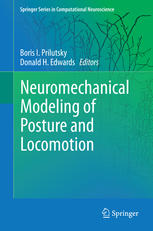

Most ebook files are in PDF format, so you can easily read them using various software such as Foxit Reader or directly on the Google Chrome browser.
Some ebook files are released by publishers in other formats such as .awz, .mobi, .epub, .fb2, etc. You may need to install specific software to read these formats on mobile/PC, such as Calibre.
Please read the tutorial at this link: https://ebookbell.com/faq
We offer FREE conversion to the popular formats you request; however, this may take some time. Therefore, right after payment, please email us, and we will try to provide the service as quickly as possible.
For some exceptional file formats or broken links (if any), please refrain from opening any disputes. Instead, email us first, and we will try to assist within a maximum of 6 hours.
EbookBell Team

4.3
88 reviewsNeuromechanics is a new, quickly growing field of neuroscience research that merges neurophysiology, biomechanics and motor control and aims at understanding living systems and their elements through interactions between their neural and mechanical dynamic properties. Although research in Neuromechanics is not limited by computational approaches, neuromechanical modeling is a powerful tool that allows for integration of massive knowledge gained in the past several decades in organization of motion related brain and spinal cord activity, various body sensors and reflex pathways, muscle mechanical and physiological properties and detailed quantitative morphology of musculoskeletal systems. Recent work in neuromechanical modeling has demonstrated advantages of such an integrative approach and led to discoveries of new emergent properties of neuromechanical systems. Neuromechanical Modeling of Posture and Locomotion will cover a wide range of topics from theoretical studies linking the organization of reflex pathways and central pattern generating circuits with morphology and mechanics of the musculoskeletal system (Burkholder; Nichols; Shevtsova et al.) to detailed neuromechanical models of postural and locomotor control (Bunderson; Edwards, Marking et al., Ting). Furthermore, uniquely diverse modeling approaches will be presented in the book including a theoretical dynamic analysis of locomotor phase transitions (Spardy and Rubin), a hybrid computational modeling that allows for in vivo interactions between parts of a living organism and a computer model (Edwards et al.), a physical neuromechanical model of the human locomotor system (Lewis), and others.